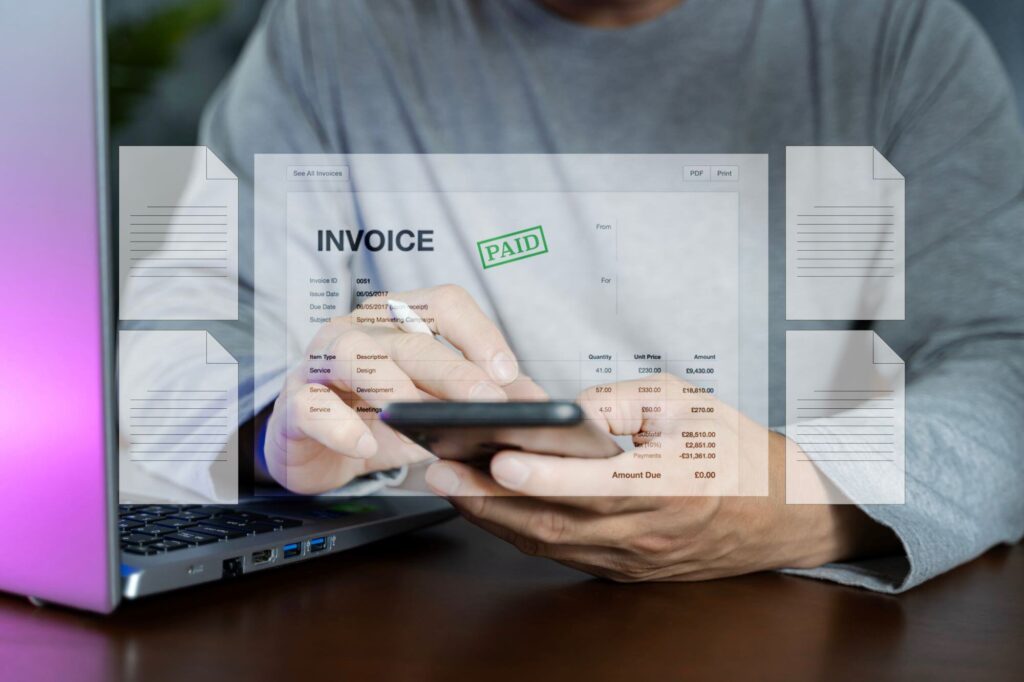
As a tech startup founder, you’ve got a lot on your plate. From product development to customer acquisition, every aspect of your business demands attention. But there’s one crucial element you can’t afford to overlook: invoicing. Getting paid promptly is essential for your startup’s survival and growth. That’s where a well-designed invoice template comes in handy.
Setting up an invoice template might seem like a small task, but it can have a big impact on your cash flow and professional image. Let’s dive into the process of creating an invoice template that’ll streamline your billing process and impress your clients.
Start with the Basics
Before you jump into customizing your roofing invoice template, you need to nail down the essentials. Every standard invoice should include:
- Your company name and logo
- Your contact information
- Client’s name and address
- Invoice number and date
- Payment terms and due date
- An itemized list of products or services
- Total amount due
- Accepted payment methods
These elements form the backbone of your invoice. They provide clarity and ensure you’re meeting legal requirements for business documentation.

Choose the Right Software
Choosing the right invoicing software is crucial. There are many options available, and such tools offer customizable invoice templates, automation features, and integration with other business tools, including accounting software. Pick one that fits your business size, budget, and specific needs. Consider the following factors when choosing your software:
Ease of Use
Ensure the software is user-friendly and doesn’t require extensive training. A simple interface saves time and allows you to focus on your core business activities.
Scalability
Choose a tool that can grow with your business, offering more features as you need them. This avoids the hassle of switching software as your startup expands.
Customer Support
Opt for software with reliable customer support to help you quickly resolve any issues. Good support ensures you won’t be stuck with problems that can disrupt your invoicing process.
Integration Capabilities
Make sure the software can integrate with your existing accounting and project management tools for seamless workflow. Integration helps streamline your operations and reduces the chance of errors.
By carefully evaluating these factors, you’ll find invoicing software that meets your needs and supports your startup’s growth. Choosing the right tool from the start will save you time and resources, making your invoicing process more efficient.
Customize Your Design
Once you’ve chosen your software, it’s time to customize your template. Here’s how you can make it unique to your startup:
Add Your Branding
Your invoice is an extension of your brand. Customize it by adding your logo, using your brand colors, and choosing a font that represents your company’s style. Consistent branding across all documents strengthens your professional image.
Tailor Your Item Descriptions
Tech startups often provide specialized services or products. Make sure your item descriptions are clear and detailed. This reduces confusion and helps clients understand exactly what they’re being billed for. Avoid technical jargon that might be unfamiliar to your clients.
Include Detailed Payment Instructions
Make it easy for your clients to pay you. Clearly state your preferred payment methods, such as bank transfer, credit card, or online payment services like PayPal. Include any necessary details like account numbers or links. The easier it is for clients to pay, the quicker you’ll get paid.
Personalize Your Thank You Note
A personalized thank you note at the end of your invoice can go a long way. It shows appreciation and fosters good client relationships. Something as simple as, “Thank you for your business!” can make a positive impact.
By customizing your invoice design with branding, clear item descriptions, detailed payment instructions, and a personalized thank-you note, you can create a professional and unique invoice for your startup.
Set Up Automation
Invoicing can be time-consuming, but automation can help streamline the process. Most invoicing software allows you to set up recurring invoices, automatic reminders for due payments, and even automatic follow-ups for late payments. This ensures you get paid on time without having to chase clients.
Consider the following automation features to enhance efficiency:
Recurring Invoices
Schedule invoices for regular clients, saving time and ensuring consistency. This is particularly useful for subscription-based services or ongoing projects.
Payment Reminders
Automatically send reminders for upcoming and overdue payments. Timely reminders can significantly reduce the incidence of late payments and improve cash flow.
Invoice Tracking
Monitor the status of sent invoices, such as viewed, paid, or overdue. This feature helps you stay informed and take action if an invoice remains unpaid.
Integrations
Connect your invoicing software with accounting tools and payment gateways for seamless transactions. Integration reduces manual data entry and minimizes errors, making your financial management more efficient.
Automating your invoicing process not only saves time but also improves accuracy and efficiency. It ensures that your cash flow remains steady and reduces the administrative burden on your team.

Ensure Compliance
Make sure your invoice complies with all relevant laws and regulations. This includes displaying your business tax ID, applying the correct sales tax, and adhering to any specific requirements in your industry or region.
Non-compliance can lead to legal issues and delays in payment. Consulting with a legal expert or accountant can help ensure that your invoices meet all necessary standards and regulations, preventing potential legal pitfalls and ensuring smooth financial operations.
Review and Test Your Template
Before sending out your invoices, review your template thoroughly. Check for any errors, inconsistencies, or missing information. Send a test invoice to yourself to see how it looks and ensure all the details are clear and correctly formatted. Additionally, consider asking a colleague or mentor to review the template for an extra set of eyes. This helps catch any overlooked mistakes and ensures your invoice is polished and professional.
Conclusion
Setting up an invoice template for your tech startup is more than just a formality. It’s a crucial step in ensuring smooth financial transactions, building trust with clients, and maintaining a professional image. By following these customization tips, you’ll create an invoice template that not only meets your needs but also enhances your startup’s efficiency and professionalism.